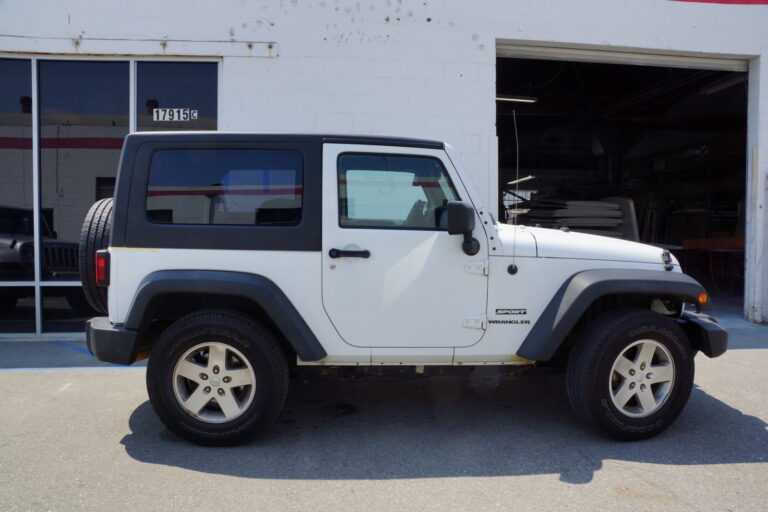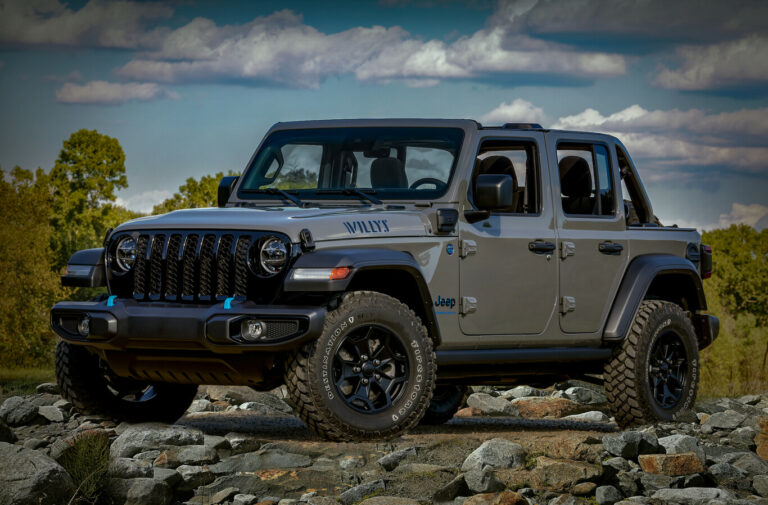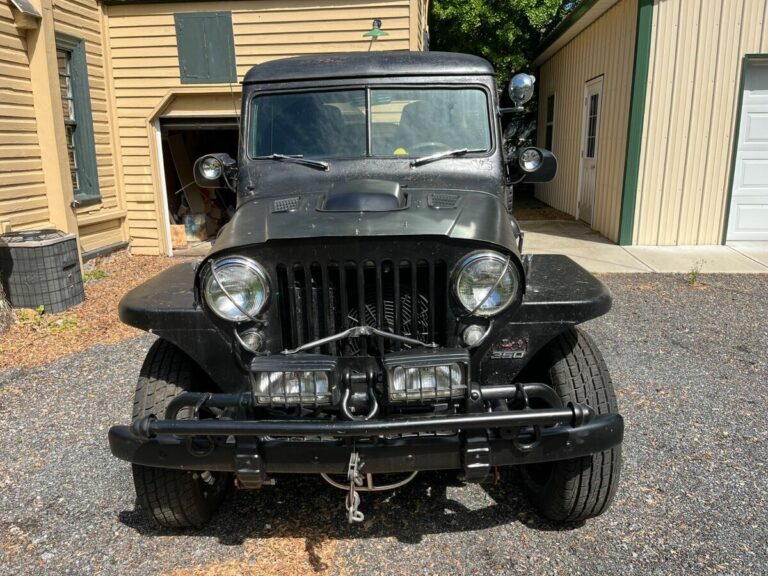1982 Jeep For Sale: A Comprehensive Guide to Owning an American Icon
1982 Jeep For Sale: A Comprehensive Guide to Owning an American Icon /jeeps.truckstrend.com
The allure of a vintage vehicle is undeniable, and few classic cars command attention quite like a Jeep. When you see "1982 Jeep For Sale," it’s more than just a listing for a used car; it’s an invitation to own a piece of American automotive history, a rugged symbol of freedom, adventure, and timeless design. The 1982 model year holds a unique place in Jeep’s storied timeline, representing the pinnacle of the beloved CJ series before significant transitions, and offering a blend of classic charm with a touch of emerging refinement. This comprehensive guide will delve into everything you need to know about acquiring, appreciating, and maintaining a 1982 Jeep, ensuring you’re well-equipped whether you’re a seasoned enthusiast or a curious newcomer.
The Enduring Appeal of the 1982 Jeep
1982 Jeep For Sale: A Comprehensive Guide to Owning an American Icon
By 1982, Jeep, under the ownership of American Motors Corporation (AMC), was a global icon. The CJ (Civilian Jeep) series, direct descendants of the original Willys MB, had evolved but retained their unmistakable rugged character. The early 1980s were a fascinating time for the CJ, as it balanced its utilitarian roots with increasing demands for comfort and versatility. This era saw the continued production of the popular CJ-7 and the niche CJ-8 Scrambler, alongside the more family-oriented full-size Wagoneer and Cherokee.
What makes a 1982 Jeep so appealing today? For many, it’s the raw, unfiltered driving experience. There are no complex electronics, just mechanical simplicity that appeals to those who enjoy working on their vehicles. Its iconic styling—round headlights, seven-slot grille, exposed hinges, and removable doors and top—is instantly recognizable and evokes a sense of nostalgia for a simpler time. These Jeeps were built tough, designed to tackle challenging terrain, and their robust construction means many are still on the road today, ready for new adventures. Whether it’s for off-roading, a unique daily driver, or a weekend cruiser, the 1982 Jeep offers a distinct personality that modern vehicles often lack.
Key Models and Their Characteristics in 1982
When searching for a 1982 Jeep, you’ll primarily encounter models from the CJ line, though other Jeep vehicles were also produced. Understanding their distinct characteristics is crucial for making an informed decision.
- Jeep CJ-7: This is arguably the most common and sought-after 1982 Jeep. Introduced in 1976, the CJ-7 offered a longer wheelbase than the CJ-5 (93.5 inches vs. 83.5 inches), which improved ride quality and stability, and allowed for the installation of an automatic transmission. In 1982, engine options typically included the reliable 4.2-liter (258 cubic inch) AMC inline-six, known for its torque, or the 2.5-liter (151 cubic inch) GM Iron Duke four-cylinder, offering better fuel economy but less power. Transmission choices included the Borg-Warner T-4 or T-5 four or five-speed manuals, or the Chrysler TF-999 three-speed automatic. The CJ-7’s balance of classic looks and improved practicality makes it a fantastic choice.
- Jeep CJ-5: Though its production was winding down and would cease shortly after 1982, some 1982 CJ-5s were still available. With its shorter wheelbase, the CJ-5 is often considered more agile and capable in tight off-road situations, but its ride is notably rougher. It shared many of the same mechanical components as the CJ-7 but offered a more "pure" vintage Jeep experience.
- Jeep CJ-8 Scrambler: This rare and highly desirable variant of the CJ-7 is essentially a stretched CJ-7 with a small pickup bed. With a 103.5-inch wheelbase, the Scrambler (designated CJ-8) offered unique utility and a distinctive profile. Its rarity contributes significantly to its higher market value today, making it a prized possession for collectors and enthusiasts looking for something truly unique.
- Jeep Cherokee/Wagoneer (SJ): While distinct from the CJ line, the full-size Cherokee and Wagoneer models were also part of Jeep’s 1982 lineup. These were more conventional, family-oriented SUVs, offering more comfort and space. They typically featured larger V8 engines (like AMC’s 360 cubic inch V8) or the 4.2L I6, and were equipped with automatic transmissions and Quadra-Trac full-time four-wheel drive. While capable, they offer a very different experience than the open-air CJ models.
- Jeep J-Series Pickups (J10/J20): These were full-size pickups based on the Wagoneer platform, offering robust hauling and towing capabilities. They shared many powertrain options with the Wagoneer/Cherokee.

What to Look For: Essential Inspection Guide for a 1982 Jeep
Purchasing a vintage vehicle, especially a 40-year-old off-roader, requires a thorough inspection. A 1982 Jeep’s condition can vary wildly, from rust-ridden projects to meticulously restored showpieces. Here’s what to prioritize:

- Frame Rust (Critical!): This is the number one concern. Inspect the frame rails meticulously, especially around the spring hangers, skid plate mounts, body mounts, and transmission crossmember. Surface rust is common, but deep, flaky, or perforated rust indicates serious structural compromise. Pay close attention to the "smile" area where the frame kicks up over the front axle.
- Body Rust: Common rust spots include the floorboards (especially under the pedals and seats), rocker panels, lower door sections, rear quarter panels, and wheel wells. Also check the cowl area under the windshield, as this can lead to water leaks.
- Engine Condition: Look for obvious oil leaks, listen for unusual noises (knocking, ticking), and check for excessive smoke from the exhaust (blue for oil, white for coolant, black for rich fuel). A compression test can reveal engine health. Inquire about recent maintenance and mileage.
- Transmission and Transfer Case: Check fluid levels and condition. Test all gears, including reverse, and ensure the 4WD engages smoothly (both high and low range). Listen for grinding or clunking.
- Axles and Differentials: Inspect for fluid leaks around the differential covers and axle seals. Check for excessive play in the universal joints (U-joints) on the driveshafts.
- Suspension: Examine leaf springs for sagging or broken leaves. Check the condition of shocks, bushings, and shackles. A sagging suspension often indicates hard use or heavy loads.
- Steering Components: Look for play in the steering wheel. Inspect the steering box for leaks and the condition of the tie rods, drag link, and ball joints.
- Brakes: Check for spongy pedal feel, pulling to one side, or excessive noise. Inspect brake lines for rust or leaks.
- Electrical System: Test all lights, gauges, wipers, and the heater/blower motor. Wiring issues can be frustrating and costly to trace.
- Interior and Top: Assess the condition of seats, dashboard, and gauges. If it comes with a hardtop, check for cracks or leaks. For soft tops, look for rips, faded fabric, and clear window visibility.
- Documentation: Always ask for the title and any available service records. A clear title is essential.

Practical Advice: If you’re not mechanically inclined, it’s highly recommended to get a pre-purchase inspection (PPI) from a trusted mechanic familiar with vintage Jeeps. This small investment can save you from significant headaches and expenses down the road.
Understanding the Value: Pricing Your 1982 Jeep
The price of a 1982 Jeep can fluctuate dramatically based on several factors. There’s no single "blue book" value that accurately captures the nuances of the classic car market.
Key Factors Influencing Price:
- Condition: This is the most significant factor.
- Project: Runs, but needs extensive work (rust repair, mechanical overhaul). ($3,000 – $8,000)
- Driver-Quality: Runs and drives reliably, but has cosmetic flaws and some deferred maintenance. ($8,000 – $15,000)
- Good: Well-maintained, minimal rust, presents well, fully functional. ($15,000 – $25,000)
- Excellent/Restored: Near-flawless, professional restoration, original or tastefully modified. ($25,000 – $50,000+)
- Model Rarity: CJ-8 Scramblers consistently fetch higher prices due to their limited production numbers. CJ-5s are generally less expensive than CJ-7s in comparable condition.
- Engine/Transmission: The 4.2L inline-six is highly desirable for its reliability and torque. Automatic transmissions can sometimes command a slightly higher price for convenience, though many enthusiasts prefer the manual.
- Originality vs. Modifications: Highly original, unmolested examples often appeal to collectors. Tasteful, high-quality modifications (e.g., fuel injection conversion, lift kits, axle upgrades) can add value if done professionally, but poorly executed mods can detract.
- Hardtop/Softtop: Hardtops are generally more desirable for security and weather protection, adding value.
- Geographic Location: Prices can vary based on regional demand and climate (e.g., drier climates mean less rust, potentially higher prices).
Estimated Price Range for 1982 Jeep Models (Approximate, Highly Variable):
| Model | Condition: Project ($) | Condition: Driver-Quality ($) | Condition: Good ($) | Condition: Excellent/Restored ($) | Key Factors Influencing Price |
|---|---|---|---|---|---|
| Jeep CJ-7 | 3,000 – 7,000 | 7,000 – 14,000 | 14,000 – 22,000 | 22,000 – 40,000+ | Engine (I6 vs. I4), transmission (auto vs. manual), rust, hardtop. |
| Jeep CJ-5 | 2,500 – 6,000 | 6,000 – 12,000 | 12,000 – 18,000 | 18,000 – 30,000+ | Engine, originality, specific year (end of production). |
| Jeep CJ-8 Scrambler | 8,000 – 15,000 | 15,000 – 30,000 | 30,000 – 50,000 | 50,000 – 80,000+ | Rarity, condition of bed, factory options, engine. |
| Jeep Wagoneer/Cherokee | 2,000 – 6,000 | 6,000 – 12,000 | 12,000 – 20,000 | 20,000 – 35,000+ | V8 vs. I6, Quadra-Trac, interior condition, woodgrain trim. |
| Jeep J-Series Pickups | 2,000 – 5,000 | 5,000 – 10,000 | 10,000 – 18,000 | 18,000 – 30,000+ | Engine, bed condition, 4×4 capability, specific model (J10/J20). |
Note: Prices are highly subjective and can vary based on location, market demand, and specific vehicle features. These are general estimates.
The Purchase Process: Tips for Buyers and Sellers
For Buyers:
- Define Your Purpose & Budget: Are you looking for a project, a weekend cruiser, or an off-road beast? This will significantly influence your budget and the condition of the Jeep you seek. Remember to factor in potential repair, registration, and insurance costs.
- Research Extensively: Familiarize yourself with the common issues of 1982 Jeeps, especially rust points. Understand the differences between the models.
- Inspect Thoroughly (or Hire a Pro): As detailed above, rust and mechanical integrity are paramount. Don’t rush the inspection.
- Test Drive: Listen for unusual noises, check the brakes, steering, and ensure the transmission shifts smoothly. Engage 4WD to confirm it works.
- Negotiate Wisely: Be prepared to walk away if the price isn’t right or if too many red flags appear. Have comparable listings in mind.
- Verify Documentation: Ensure the title is clear and matches the VIN on the vehicle.
For Sellers:
- Prepare Your Jeep: Clean it meticulously, inside and out. Address minor issues that could deter buyers (e.g., burnt-out bulbs, loose trim).
- Gather Documentation: Have the title readily available, along with any service records, receipts for parts, or modification details. This builds trust.
- Take High-Quality Photos: Showcase your Jeep from multiple angles, including interior, engine bay, undercarriage (if clean), and any unique features. Be honest about imperfections with clear photos.
- Write a Detailed, Honest Description: List the model, engine, transmission, mileage (if accurate), known issues, recent work, and any modifications. Transparency is key.
- Price Competitively: Research comparable Jeeps for sale in your area and online. Be realistic about its condition and value.
- Be Responsive and Patient: Answer questions promptly and thoroughly. Be prepared for negotiation and allow serious buyers to inspect the vehicle.
Life with a 1982 Jeep: Ownership & Customization
Owning a 1982 Jeep is a lifestyle choice. It’s a vehicle that demands attention and rewards with character and capability.
- Maintenance: While mechanically simple, a 40-year-old vehicle will require consistent maintenance. Regular oil changes, fluid checks, and lubrication of chassis components are vital. Be prepared for worn seals, hoses, and bushings to need replacement over time. The good news is that parts availability for the CJ series is surprisingly good, with a robust aftermarket industry supporting everything from engine components to body panels.
- Common Upgrades: Many owners choose to personalize their Jeeps. Popular modifications include:
- Lift Kits: For increased ground clearance and larger tires.
- Tire Upgrades: Larger, more aggressive tires for off-road performance.
- Fuel Injection Conversion: Swapping the carburetor for a modern EFI system can drastically improve cold starts, fuel economy, and power.
- Engine Swaps: Replacing the original engine with a more powerful or modern option (e.g., GM LS engines) is a common, though complex, modification.
- Interior Comfort: Upgrading seats, adding a modern sound system, or improving insulation.
- Axle Upgrades: For heavy off-road use, stronger axles are often installed.
- Challenges:
- Fuel Economy: Don’t expect Prius-like MPG. These vehicles were not designed for efficiency.
- Ride Comfort: The leaf spring suspension provides a rugged ride, especially in shorter wheelbase models.
- Safety Features: Modern safety features (airbags, ABS, crumple zones) are non-existent. Drive defensively and be aware of your surroundings.
- Rust Prevention: Ongoing vigilance against rust is crucial, especially if you live in a humid or salt-prone environment.
Despite these challenges, the joys of owning a 1982 Jeep far outweigh the inconveniences for most enthusiasts. The open-air driving experience, the sense of connection to the road (or trail), and the camaraderie of the Jeep community are unparalleled.
Frequently Asked Questions (FAQ) about 1982 Jeeps
Q: Is a 1982 Jeep a good daily driver?
A: It can be, but it’s not ideal for everyone. Fuel economy is poor, ride comfort is limited, and modern safety features are absent. They are best suited for enthusiasts who understand and appreciate their vintage quirks.
Q: What are the most common problems with 1982 Jeeps?
A: Rust (especially frame and body), worn suspension components, carburetor issues, and electrical gremlins are common. Regular maintenance is key.
Q: Are parts readily available for 1982 Jeeps?
A: Yes, parts for the CJ series are surprisingly abundant thanks to a strong aftermarket and enthusiast community. Many mechanical components are shared with other AMC/Jeep vehicles of the era.
Q: What’s the fuel economy like?
A: Expect single-digit to low-double-digit MPG, typically 10-15 MPG depending on the engine, gearing, tire size, and driving style.
Q: Is it safe to drive a 1982 Jeep?
A: They lack modern safety features. Drive defensively, be aware of their higher center of gravity, and ensure all mechanical systems (brakes, steering) are in excellent condition. Roll cages are a common safety upgrade.
Q: Can I put a modern engine in it?
A: Yes, engine swaps (e.g., GM LS engines, Ford Coyote) are popular modifications, though they require significant mechanical expertise and financial investment.
Q: What’s the main difference between a CJ-5 and a CJ-7?
A: The CJ-7 has a 10-inch longer wheelbase (93.5 inches vs. 83.5 inches), offering a slightly smoother ride and more interior space, including the ability to fit an automatic transmission more easily.
Q: How much does insurance cost for a classic Jeep?
A: Insurance for a classic vehicle can sometimes be cheaper than for a modern car, especially if you opt for specialized classic car insurance, which often has mileage restrictions but provides agreed-upon value coverage.
Conclusion
The "1982 Jeep For Sale" listing represents more than just a transaction; it’s an opportunity to embrace a unique part of automotive heritage. Whether you’re drawn to the legendary off-road prowess of the CJ-7, the rarity of a Scrambler, or simply the timeless aesthetic of a bygone era, owning a 1982 Jeep is an investment in adventure and a connection to a passionate community. While these vehicles demand attention and understanding, the rewards—the thrill of an open-air drive, the satisfaction of turning heads, and the capability to conquer almost any terrain—are immeasurable. Approach your search with diligence, a clear understanding of what to expect, and a passion for the open road, and you’ll find that a 1982 Jeep is not just a vehicle, but a lifestyle waiting to be lived.




